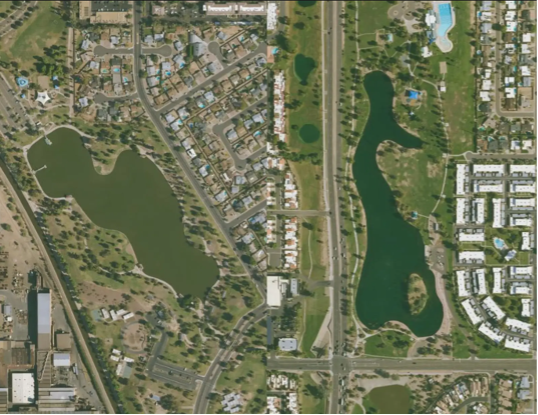MSU researchers find US lakes in communities of color are monitored less for water quality
September 9, 2024 - Emilie Lorditch
Lakes provide drinking water, food, recreation, and mental health benefits to people who use them or live nearby. Regular monitoring of water quality is essential to collect information to track lake health. Without this information, people who use the lakes may be put at a higher risk if water quality is poor. However, it is unknown whether some people are at greater risk than others, such as because of their race or ethnicity.
 A team of Michigan State University researchers found that lakes in communities of color were three times less likely to be sampled at least once than lakes in White communities. The disparity was even larger when considering lakes monitored for 15 years or more. Lakes in communities of color were seven times less likely to have long-term monitoring data than lakes in White communities. The researchers found similar disparities in lake monitoring in Hispanic communities compared to non-Hispanic communities.
A team of Michigan State University researchers found that lakes in communities of color were three times less likely to be sampled at least once than lakes in White communities. The disparity was even larger when considering lakes monitored for 15 years or more. Lakes in communities of color were seven times less likely to have long-term monitoring data than lakes in White communities. The researchers found similar disparities in lake monitoring in Hispanic communities compared to non-Hispanic communities.
The project was led by a former MSU undergraduate student, Jessica Díaz Vázquez, now a 2024 Maryland Sea Grant Program John A. Knauss Marine Policy Fellow in the Office of the Under Secretary for Oceans and Atmosphere & NOAA Administrator. She conducted this study while working in the joint laboratory of Patricia Soranno, a professor in the College of Natural Science, and Kendra Spence Cheruvelill, a professor in the Lyman Briggs College, both of whom have partial appointments in the College of Agriculture and Natural Resources.
“To the best of our knowledge, our study is the first to examine the availability of lake water quality monitoring data at the national scale from an environmental justice perspective,” said Soranno. “Although the current environmental justice literature shows that marginalized communities live with more polluted air and land, few studies focus on freshwaters.”
For Díaz Vázquez, her passion for ecology alongside her personal experience growing up in a predominantly Latinx, low-income community faced by environmental injustices in Houston, Texas shaped the way she wanted to study this topic.
“I set out to create a research project that focused on who lives near lakes and the monitoring data that identifies the health of those lakes.” said Díaz Vázquez. “Our primary objective was to see whether the likelihood of lakes being sampled differed by the race and ethnicity of the people living nearby.”
The team of researchers, including Ian M. McCullough, a former post-doctoral researcher, and Maggie Haite, a former student in the College of Agriculture and Natural Resources, used data from the LAGOS-US research platform. LAGOS-US is a publicly available database created by a team led by Soranno and Cheruvelil that provides information on hundreds of different characteristics for all 500,000 lakes in the lower 48 states of the U.S., including whether the lakes are sampled for water quality or not. For this project, Díaz Vázquez combined data from LAGOS-US with data from the US Census to classify lakes according to the communities around them based on race and ethnicity.

Composite image of two lakes from the dataset presented in Diaz et al.. The lake on the left panel (Kiwanis Lake) is an unsampled lake in a community where > 25% of the population is Hispanic. The lake on the right (Chaparral Lake) is a sampled lake from a non-Hispanic and White community. Both lakes are in Arizona.
“These data disparities make it impossible to assess the water quality of lakes in communities of color and Hispanic communities,” said Spence Cheruvelil. “We encourage local, state, or regional environmental monitoring programs to include equity in their sampling designs by selecting which lakes to sample based not only on natural features (such as lake size or land use) but also on social features such as race and ethnicity of the nearby communities.”
The research was published in the journal Frontiers in Ecology and the Environment on September 9.
This article was adapted from MSUToday. Other coverage includes the Detroit Free Press.

